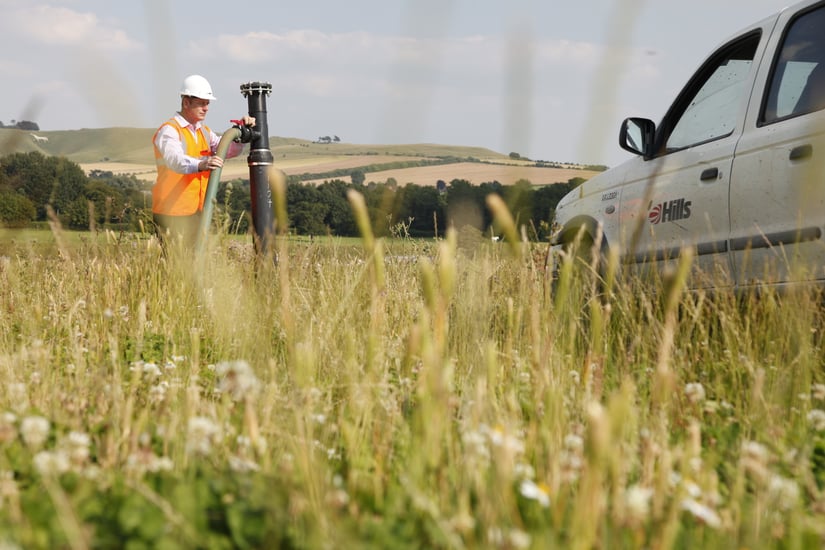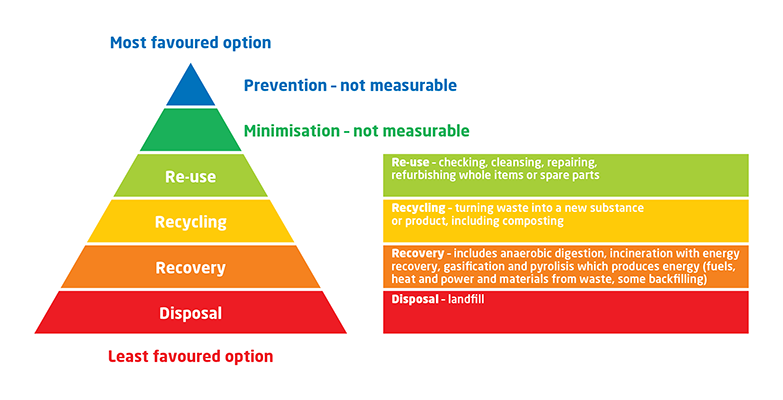Landfills: the essential last step in effective waste disposal

Dating back over 5,000 years, landfills are one of the oldest forms of waste disposal. Over time landfills have transformed from a simple hole in the ground to a highly effective and efficient system to safely dispose of non-recyclable refuse. Whilst landfills are an essential last step in the waste disposal process for materials that cannot be disposed of safely in an alternative way, a number of misconceptions remain surrounding their environmental impact and safety.
Energy from Waste
One of the main misconceptions is that a landfill’s only function is to store waste. However, modern landfills are much more complex, offering more than a simple method for safe waste disposal. Landfills are also an effective source of renewable energy, a fact that is often overlooked.
In fact, alongside agricultural emissions, landfill waste (from non-hazardous landfill sites) is one of the main sources of methane which is the primary component of natural gas. With the UK government’s renewed focus on delivering long-term, affordable energy from renewable sources, landfills are an excellent resource. The accumulation of naturally occurring carbon monoxide and methane gas, which is produced as waste breaks down, can be further utilised in energy production with gas captured to produce energy from waste in the form of electricity.
Hills Waste has generated over 37,000 MWh of electricity for the grid by recovering landfill gas, a statutory commitment that helps power homes and businesses more sustainably.
Waste reduction
Another concern surrounding landfills is the belief that they increase the amount of waste in the wider environment.
Importantly, the amount of waste being disposed of can and should be reduced through effective waste management strategies that only utilise landfills as a last resort.
Landfills can actually help to reduce the amount of waste in the environment by providing a designated area for the safe disposal of non-recyclable refuse. If these facilities were unavailable, waste may be incorrectly disposed of posing a risk to public health and the surrounding environment.
As a company dedicated to positive waste management, Hills educates its customers on how best to reduce the amount of refuse that ends up in landfill, focussing on waste prevention wherever possible. Some simple to implement suggestions can be found here with these 7 tips to reduce waste, however some solutions are much more complex. We actively encourage everyone to move their waste up the waste hierarchy and promote re-use, recycling, recovery and finally safe disposal. An example of this is shown below.
The waste hierarchy
We are helping householders and businesses move their waste up the waste hierarchy. We are firmly committed to producing less waste, increasing recovery and re-use, and reducing landfill, unless this is the only option.

Our commitment to effective waste management saw over 88,000 tonnes of waste being recycled in 2022 and over 84,000 tonnes of solid recovered fuel captured.
Environmentally Conscious
There are some generally held views about landfills and their impact on the planet. Ecologically speaking, carefully managed landfills that are tightly controlled and well-regulated should not negatively impact the environment. Ecological impacts such as air and water pollution, including the generation of leachate, are mitigated through responsible landfill management. Local environmental impacts such as odour, are alleviated through gas extraction for energy from waste and other odour control methods.
Environmentally conscious operators, such as Hills Waste Solutions, ensure that best practice is adhered to throughout the life of every landfill, from initial operation through to final restoration. All operations are closely monitored to ensure they comply with all regulations, permits, reports and inspections.
Sustainability
Once landfills have reached the end of their life, they are not simply abandoned, and do not leave behind an unsightly legacy in their wake.
On completion of a site, the operator is obliged to implement effective landfill restoration, which can typically be completed within 12 months. The site is restored to a natural landscape that is safe for both flora and fauna. Hills Waste involves arborists and ecologists during the restoration stage of all their landfills to ensure they are sympathetically and meticulously restored. We work in partnership with local wildlife trusts to re-wild or re-naturalise the land and restore valuable ecosystems. Find out more about our involvement in the community.
Importantly, our responsibilities continue for an aftercare period lasting 60 years, where we are still responsible for the environmental management of the site, including the continued extraction of landfill gas for use to generate electricity, although this gradually reduces over the 60 years as gas volumes decline.
Through effective waste management, safe landfill practices and investing in new technology, Hills Waste is committed to providing customers, both in the public and private sectors, with suitable solutions to reduce their waste effectively in order to support a sustainable future.
Interestingly, Hills are at the early stages of planning a solar park at one of our restored landfills, where we will be able to demonstrate our continued use of the land for a more sustainable future.
If you would like to find out more about how Hills can support you with your waste management, call our helpful Customer Support Team on 0808 145 4533.
